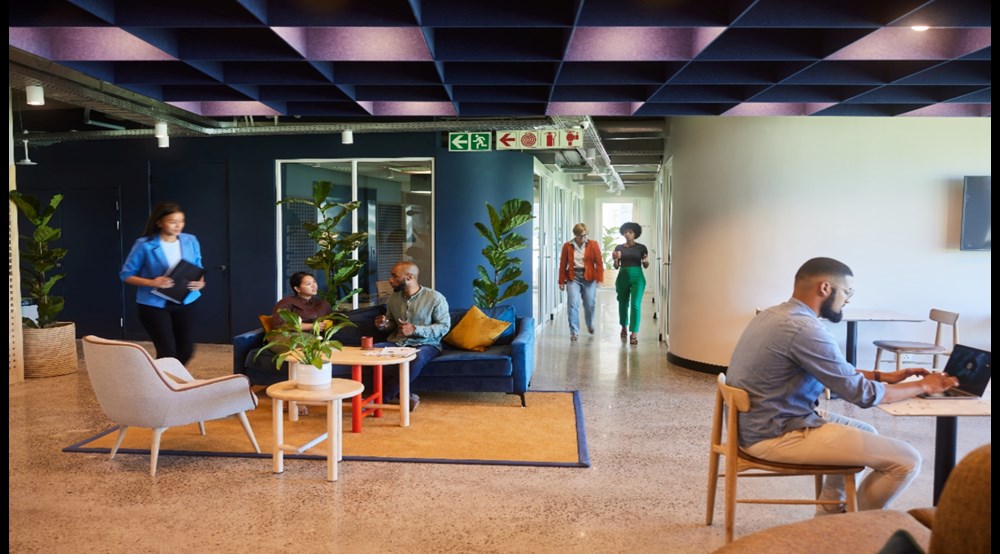
Let us help you with finding an office space
Our experts are here to help take the hard work out of finding your next office space.

In today's fast-paced business environment, the concept of agile working has become a cornerstone of modern office design. Agile workspaces are characterised by their flexibility, adaptability, and focus on fostering collaboration and productivity. They are designed to meet the evolving needs of modern workers and businesses, breaking away from the traditional, static office layout.
This article delves into the intricacies of agile workspaces, shedding light on how they foster productivity, collaboration, and employee wellbeing. We explore real-life examples and the benefits they bring to contemporary office spaces.
The evolution of workspaces over the years has been marked by a shift towards more dynamic and flexible environments. Agile workspaces have emerged as a response to the changing needs of businesses and their employees.
Agile office spaces are designed to be flexible, accommodating various work styles and needs. This approach often includes elements like shared spaces, private pods, collaborative areas, and tech-enabled rooms, allowing for both individual focus and team collaboration. These workspaces are adaptable, promoting productivity, creativity, and employee well-being.
The rise of these types of workspaces is a significant trend in the modern workplace, driven by several factors, including:
Agile working is a flexible and adaptable approach to work that focuses on outcomes rather than presenteeism. It aims to create a more responsive, efficient, and effective organisation by empowering employees to work in a way that suits their individual needs and preferences.
Key characteristics of agile workspaces:
Here are the key characteristics that define agile workspaces:

The key principle underpinning agile work environments is the notion of adaptability. These spaces are designed to accommodate changing project requirements, evolving team dynamics, and individual preferences. Employees can move freely between different workstations, collaborate in designated areas, and retreat to quiet zones for focused work. Here are some examples of agile work environments in office spaces:
Open Floor Plans and Their Advantages
Open floor plans are a staple in agile workspaces. They facilitate easier communication, foster a sense of community, and enhance collaboration among team members. This layout also allows for quick reconfiguration to suit different project needs.
Breakout Areas and Collaboration Zones
These are designated spaces for informal meetings, brainstorming sessions, or relaxation. They offer a change of scenery and can boost creativity and morale.
Hot-Desking Practices
Hot-desking involves employees using any available desk rather than having a fixed one. It encourages flexibility and interaction among different teams, fostering a dynamic work environment.
Remote Work Integration
Agile workspaces often integrate remote working by providing the necessary technology and support. This setup acknowledges the changing nature of work and the importance of work-life balance.
Tech-Enhanced Spaces for Seamless Work
Technology is integral to agile workspaces, supporting collaborative tools, video conferencing, and seamless connectivity for both in-house and remote workers.
Adjustable/Flexible Furnishings for Various Work Needs
Furnishings in agile spaces are designed to be adaptable and safe. They include adjustable desks, ergonomic chairs, and modular furniture that can be rearranged as needed.
Benefits of agile workspaces:
Agile workspaces are not just a trend but a strategic approach to business success. By adopting agile principles, companies can create environments that are conducive to productivity, innovation, and employee well-being. It's anticipated that more companies will adopt this approach, leading to office spaces that are more versatile, technology-driven, and employee-centric. This evolution will not only accommodate the changing nature of work but also attract and retain top talent.
By embracing flexibility, collaboration, and technology, agile workspaces can create a more productive, innovative, and satisfying work environment. As businesses continue to evolve and adapt to the changing demands of the workplace, agile workspaces are likely to play an increasingly important role in shaping the future of work.
Flexible office spaces have placed themselves at the forefront of agile working. They provide the physical environments that support this dynamic approach. These spaces are designed to be multipurpose, accommodating a range of activities from focused work to collaborative projects.
At Knight Frank we have a variety of flexible office spaces that provide agile ways of working available to rent, so if you’re looking for flexible working space but unsure where to start, get in touch with us today.

Our experts are here to help take the hard work out of finding your next office space.